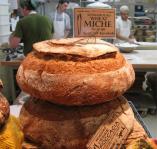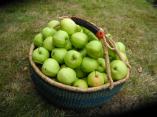Something else of interest from the Poetry Paper I mentioned earlier, a feature called The Poetry Family Trees. Featured poets – just-appointed US poet laureate Donald Hall, Sinead Morrissey, Michael Symmons Roberts, Lorna Goodison, Adrian Mitchell – were asked the following questions, which are interesting ones for all of us to keep in the backs of our minds.
- Which ‘family tree’ do you think you belong to as a poet – which poets do you recognise as your precursors?
- Why do you like these poets and what do you value them for?
- The first poem/poet that made an impact on you. When and why?
- The next book by someone you’re most looking forward to?
- How much time do you spend reading poetry in an average week?
- And what proportion are contemporary/from earlier centuries?
- What else do you read?
Continuing with the many-named vegetable theme, here’s another one for you: Chinese cabbage. I’m in favour of going by the Chinese simplified name, “Large White Vegetable”. But if you want to do a closer identification, we’re talking Brassica campestris, aka Brassica rapa – subspecies pekinensis, Che-foo type. You may also encounter it as: wong baak, won bok, wong nga bok, da baicai, pe-tsai, pai-tsai, pechay, or nappa, napa, Siew Choy/siu choy, tsina, kubis gna, hakusai, celery cabbage and Peking cabbage; some of these names might attach themselves to another category of pekinensis – Chihili type – which is greener and leafier. We are gravely warned against confusing it with another Brassica subspecies – chinensis – better known as bok choy or pak choy and is also called Chinese white cabbage, Chinese mustard, white mustard cabbage.
A good source of vitamin A, this vegetable – let’s call it Chinese cabbage – has been grown in Asia since the 5th century, and in North America for about a hundred years. It forms the basis of the Korean wonder-food Kimchi (yum!). It is a wonderful salad vegetable owing to its tender, juicy, mildly spicy flavour. The best ever quick salad meal, which I first had in someone’s home in Prague of all places, is:
About 2 cups Chinese cabbage, in 1 inch chunks
3 rashers bacon
1 clove garlic
1/4 lemon
1/4 cup good olive oil
Cook the bacon; cut in 1 inch pieces. While you’re cooking the bacon, mince or press the garlic and toss it with the cabbage. Toss in the bacon, squeeze the lemon and drizzle the olive oil. Grind a bit of pepper over it all if you must. Mix fleetingly and eat hungrily. Speak to no one you haven’t shared this with – at least until the garlic subsides.
There is something ecstatic in this meal for me: the collision of hot salty bacon with crunchy cold cabbage, the tartness of the lemon and bite of garlic. And the trusty olive oil doing what oil does: dispersing all those discrete flavours across the tastebuds









